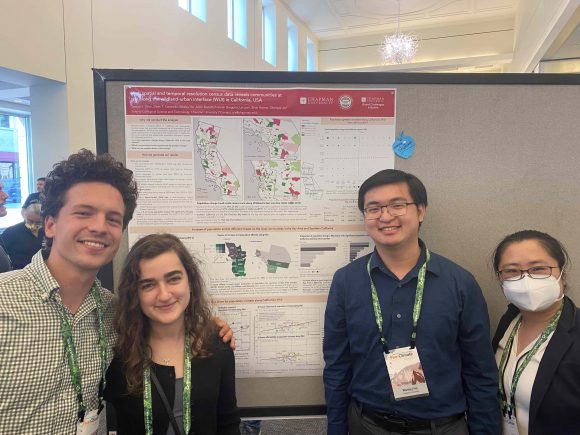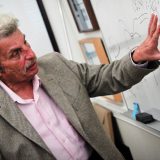GCI Team at Wildland Fire Conference Study documents changes in number of people living at the Wildland-Urban Interface
June 22, 2022
A team of science and engineering students that recently finished participating in the Grand Challenges Initiative has presented their results at the 2022 Fire and Climate Conference organized by the International Association of Wildland Fire. Jessica Viner, Slade Laszewski, and Wesley Ho led the project with fellow students Justin Ewoldt, Pionnah Gregorio, and Liz Lyon. Drs. Shenyue Jia and Brian Hoover served as faculty mentors.

The students used census data to study how the risk to communities at the Wildland-Urban Interface (WUI) has changed over time in the state of California. Their results show that:
•About one-third (29.1%) of census tracts in California’s WUI have seen a significant population increase from 2010 to 2019, affecting 12.7% population in California.
• The population increase along WUI is largely driven by the sixteen counties in the San Francisco Bay Area (10) and Southern California (6).
• Riverside is the county with the highest number of residents living in WUI tracts that have experienced significant population increase during the past decade.
• Preliminary results showed that the increase of population along WUI is driven by the house affordability and house ownership.
The study was entitled, “High Spatial and Temporal Resolution Census Data Reveals Communities at Risk Along the Wildland-Urban Interface (WUI) in California, USA.” Further details are available at Chapman’s Digital Commons.
The team joins a growing list of undergraduate student teams that have presented their research at national conferences including the annual meeting of the American Neuropsychiatric Association and the annual game design conference Play Make Learn.


